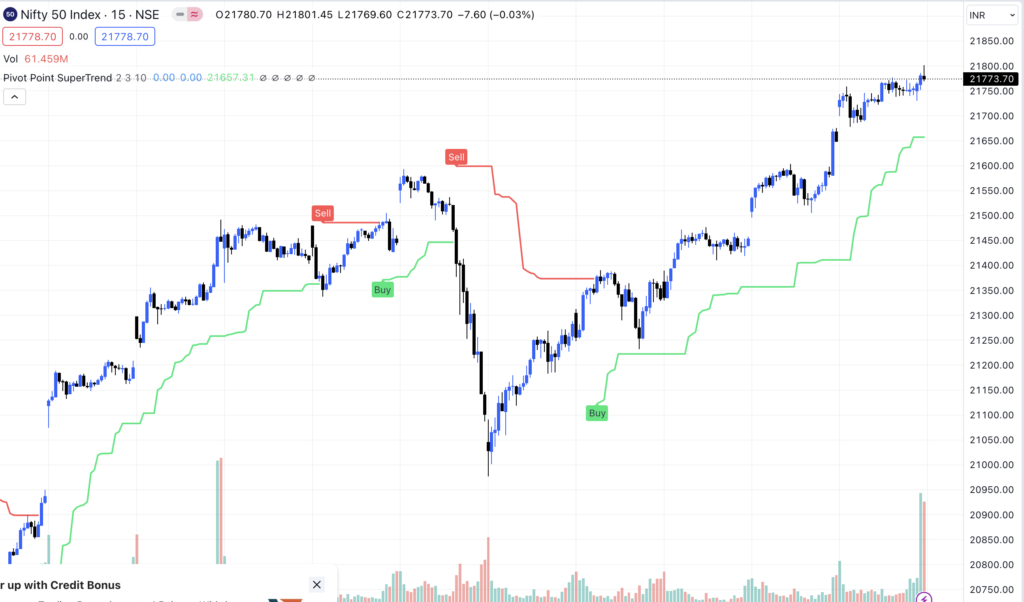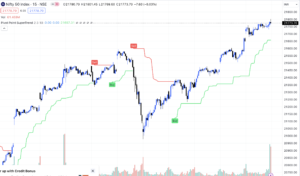Pivot Point Super Trend : Best Trading Strategy for Beginners

In the dynamic world of financial markets, traders are constantly seeking innovative strategies to gain a competitive edge. One such strategy that has gained popularity is the Pivot Point-Based Supertrend Strategy. This approach combines the principles of pivot points, a widely used technical analysis tool, with the Supertrend indicator to identify and capitalize on market trends effectively.
Understanding Pivot Points: Pivot points are significant price levels calculated from the previous day’s high, low, and close. These levels act as potential support and resistance zones. Traders often use pivot points to make informed decisions about entry and exit points, helping them navigate the complexities of market movements.
Integrating Supertrend Indicator: The Supertrend indicator adds an extra layer of sophistication to the strategy. This trend-following tool helps traders identify the prevailing trend and potential reversal points. The Supertrend indicator is plotted on the price chart, with its values changing based on the market conditions.
Here is the link to redesigned version of Pivot Point Based Supertrend Indicator on tradingview
Key Components of the Strategy:
- Pivot Points Calculation: Start by calculating the daily pivot point, along with support and resistance levels. This forms the foundation of the strategy.
- Supertrend Indicator Setting: Choose appropriate parameters for the Supertrend indicator, such as period and multiplier, based on the market’s volatility and your trading preferences.
- Trend Identification: The Supertrend indicator generates buy signals when the price is above the indicator line, signifying an uptrend. Conversely, sell signals are generated when the price is below the Supertrend line, indicating a downtrend.
- Confirmation from Pivot Points: Look for confirmation of trend signals by analyzing whether the price is respecting pivot point levels. A bounce off a pivot point can validate a trend direction.
Execution of Trades: When a clear trend is identified, traders can initiate positions in the direction of the trend. For example, in an uptrend confirmed by the Supertrend indicator and supported by a bounce off a pivot point, a trader may consider entering a long position. Conversely, in a downtrend, a sell position could be initiated.
Risk Management: As with any trading strategy, risk management is crucial. Traders should set stop-loss orders to limit potential losses and adhere to proper position sizing principles.
Conclusion: The Pivot Point-Based Supertrend Strategy combines the robustness of pivot points with the trend-following capabilities of the Supertrend indicator. Traders using this strategy aim to ride the waves of market trends, making informed decisions with the help of key support and resistance levels. While no strategy guarantees success, integrating pivot points and the Supertrend indicator provides a structured and systematic approach to navigating the ever-changing financial markets.





